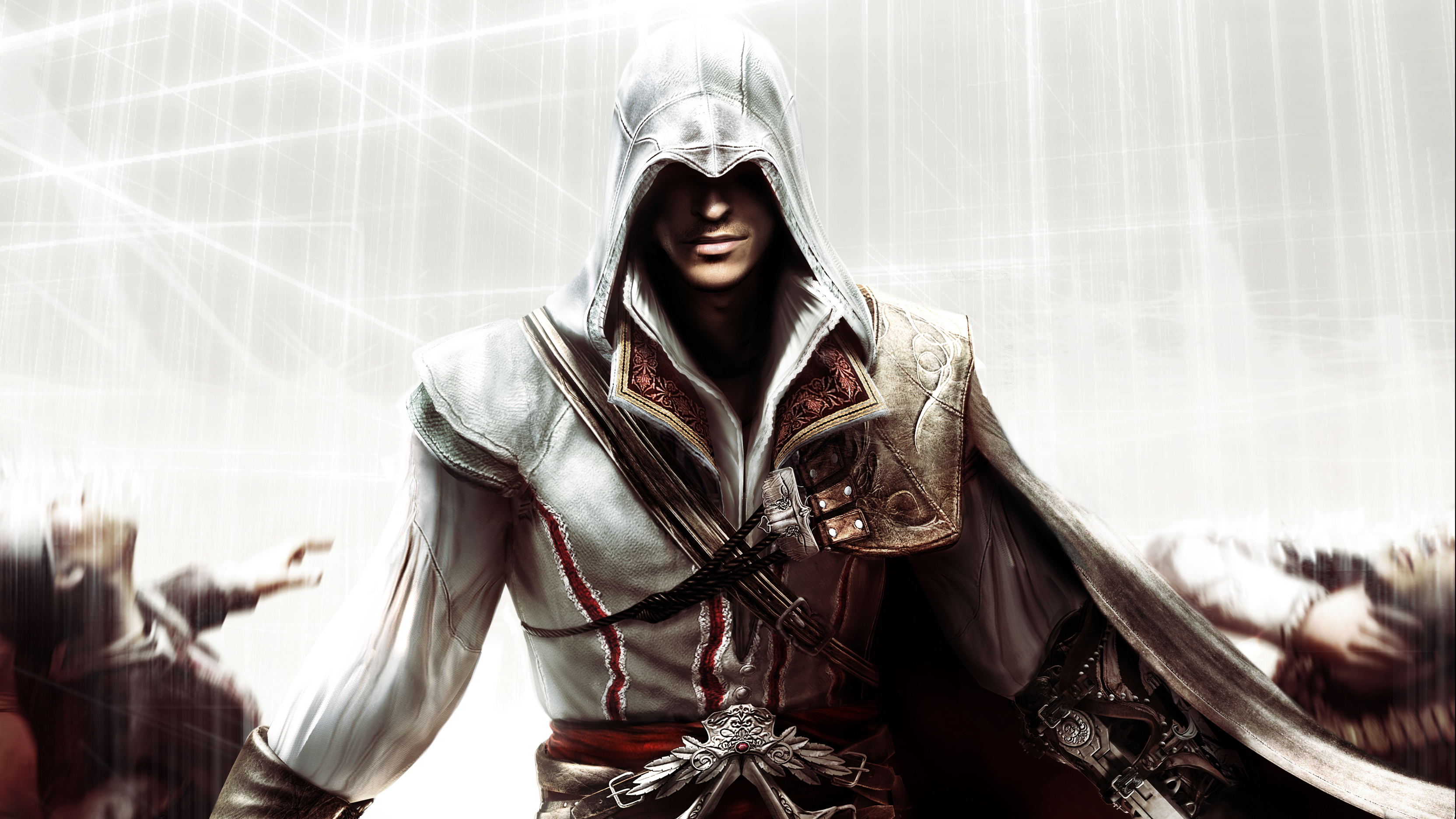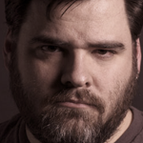GamesRadar+ Verdict
Pros
- +
Huge
- +
brilliantly realized world
- +
Lots of new ways to kill horrible people
- +
Buildings are beautifully rendered
- +
fully climbable
Cons
- -
Scanlines and pop-in mar the visuals
- -
Faces look kind of dated (think GTA IV)
- -
Accents can get a leetel-a seelly
Why you can trust GamesRadar+
It’s no secret we loved the first Assassin’s Creed – maybe even a little too much. Climbing up impossibly tall structures and stealthily murdering Templar knights during the sharply realized Crusades was so much fun, we accepted certain flaws – like the repetitive side-tasks you had to undertake before each assassination mission could be unlocked, or the way the game sent you back to your home fortress after each successful takedown – as minor irritations. But as it turned out, a lot of other players didn’t. Neither, it seems, did the developers of Assassin’s Creed II.
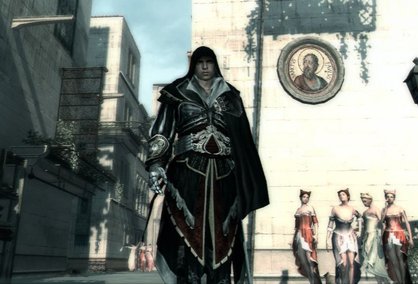
Above: Welcome to the Renaissance, bitches
With the bigger, bloodier and hugely improved sequel, most of the complaints that made the first AC so divisive are gone. Side tasks? Sidelined to strictly optional status; the focus is now firmly on making your enemies’ lives miserable before you kill them. Walking around reading emails in the near future? Not even for one second. Riding horses across miles of samey wilderness? Convenient fast-travel stations now enable you to cover huge distances in seconds (although horses are still useful). Annoying beggars? Replaced by less-annoying minstrels who can be distracted with thrown coins. Awkward fights? Well, those still look pretty similar, but they’ve been retooled to be faster, much more varied and easier to understand.
What makes Assassin’s Creed II great isn’t just that it fixes most of what was wrong with the first game, though. It’s that it takes what the first game started and uses it to build something much bigger, much more involving and much more fun. The open-world action is similar – you’ll still spend a lot of time free-running across rooftops and obstacles (which is a blast), climbing up the sides of gargantuan buildings, assassinating unwitting enemies and getting into seemingly endless swordfights with guards – but the sequel expands on the original formula so much, and so well, that Assassin’s Creed feels like a training run by comparison.
This is partly because the world you’ll explore – which this time consists of five cities set during the Italian Renaissance – feels much more fleshed out and believable than the original, even coming complete with a historical database you can access every time you come across a notable person or landmark. It’s also partly because the new hero, cocky young nobleman-turned-assassin Ezio Auditore, has a much livelier, more charming personality than his cold, collected ancestor Altair, and comes off as more of an ass-kicking, morally ambiguous superhero than a merciless killer. It also doesn’t hurt that his adventure – which begins in 1476 and ends in 1499 – has a much more epic, personal feel than the first game did, as you see Ezio slowly evolve from a scared teenager, desperate for vengeance after his father and brothers are executed, to a near-invincible badass in pursuit of the conspiracy that killed them.
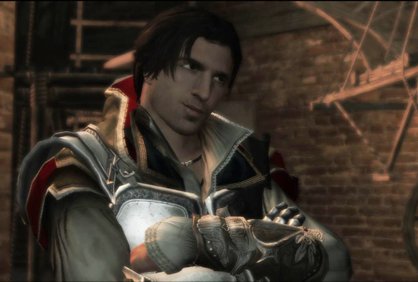
Above: You even get to see his face once in a while, too
He’s not a lone wolf, either, and the cast of characters who come together to help him are more believable, more actively helpful and much easier to care about than any of the first Creed’s supporting assassins. They also represent a good mix of fictional characters – like Ezio’s family and his acrobatic thief allies – and actual historical figures, including the great Lorenzo di Medici and Leonardo da Vinci, who as Ezio’s closest friend plays a major role in the story.
Mostly, though, ACII is a huge improvement because there’s tons more to do this time around. In addition to Ezio’s central story missions – which will take around 15-20 hours to complete if you blast straight through – there’s a lot of optional stuff that it’s in your interest to uncover. Aside from the side missions – which consist largely of beating up faithless husbands, racing thieves across rooftops, and killing targets for money – you’ll be able to ferret out hundreds of treasure chests, eagle feathers, semi-mystical glyphs and statuettes hidden throughout the world, gaining rewards for finding them all.
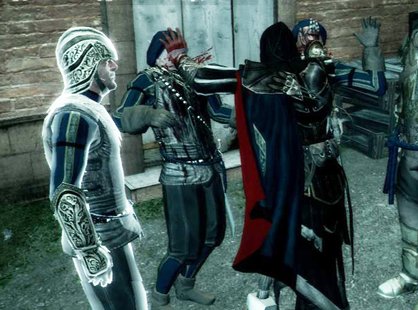
Above: Also, you can stab guards in the head with dual hidden blades, which is awesome
There are also squads of thieves, mercenaries and prostitutes to command, who are useful for luring, fighting and distracting guards, respectively. There’s a failing town you can rebuild and invest in, and it’ll reward you with a safehouse and regular cash payments. There are new vehicles to pilot, not the least of which is one of Leonardo da Vinci’s legendary flying machines. There are also six semi-hidden Assassin tombs for you to explore, which take the form of vast, Prince of Persia-style environmental-puzzle dungeons that can eventually net you a near-invincible suit of armor.
Or, to put it another way:
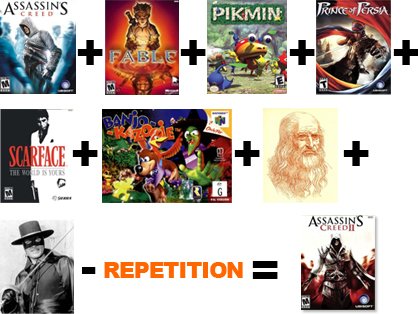
So that’s all fine and good, but it leaves one question for disgruntled would-be fans of the first game: What about Desmond?
More info
| Genre | Action |
| Description | Bigger, bloodier and far more epic than its predecessor, Assassin’s Creed II is a must-play for anyone who loves adventure, swordplay and climbing around on classical architecture. |
| Platform | "Xbox 360","PS3","PC" |
| US censor rating | "Mature","Mature","Mature" |
| UK censor rating | "18+","18+","18+" |
| Alternative names | "Assassin's Creed 2" |
| Release date | 1 January 1970 (US), 1 January 1970 (UK) |

